From glorious highs to an uncertain future, can NASCAR recapture glory at Dover?
- Oops!Something went wrong.Please try again later.
At its height, Dover Motor Speedway was filled with 140,000 fans for NASCAR races, about 15% of Delaware's entire population.
This happened twice each year.
The stands were packed. The hotels were filled. The restaurants thrived. And the racing was never better.
The pinnacle was on Sept. 23, 2001, when Dover hosted the first NASCAR race after 9/11. It was the largest sporting event in the U.S. since that fateful day.
Lee Greenwood sang “God Bless the USA.” Tanya Tucker sang the national anthem. The race was won by Dale Earnhardt Jr., who earlier that year lost his father, Dale Earnhardt Sr., who crashed and died at the Daytona 500.
Earnhardt and many fans had tears in their eyes as he took his victory lap waving an American flag out the window.
"I think what the fans provided us before the race, with all the flag-waving and cheering, was some kind of inspiration for us,” Earnhardt Jr. said that day. “It was worth it today to show the fans … that we feel the same way that they do about what has happened to our country."
NASCAR in Dover was never bigger.

The speedway had added seats for the 14th straight year, increasing capacity from 17,500 seats in its humble beginnings in 1969, to 135,000 from 2001-09.
This Sunday, 21 years later, the scene will be markedly different when Dover hosts the DuraMAX Drydene 400 presented by RelaDyne. The other races during the weekend are the General Tire 125 ARCA Menards Series East Race on Friday, and the A-GAME 200 NASCAR Xfinity Series Dash 4 Cash Race on Saturday.
Seating capacity has been reduced three times over the past 13 years, down to its current level of 54,000. Dover Motor Speedway president and CEO Mike Tatoian called the 60% reduction in seating, "right-sizing."
Instead of two races each year in NASCAR's Cup series, as took place for 50 years from 1971-2020, now there is only one.
And it's not out of the realm of possibility that Dover might drop off the schedule entirely in the coming years, much like races at Chicagoland and Kentucky Speedway did beginning in 2021.
Tatoian doesn't see it that way.
"I go back to the uniqueness of the facilities," he said. "I think if you ask the competitors about their favorite tracks, they’ll say Dover is always in the conversation. It’s unique – 24-degree banks, 9-degree straightaways, concrete. (Drivers) feel like they’re going 300 mph in the turns.
"Nothing has been indicated to us from the sanctioning body that changes will be made any time soon. And when you look at it, there’s a lot of history, a lot of great racing."
But it may be out of Tatoian's hands. That's because last November, Speedway Motorsports, Inc., bought Dover Motorsports, Inc.
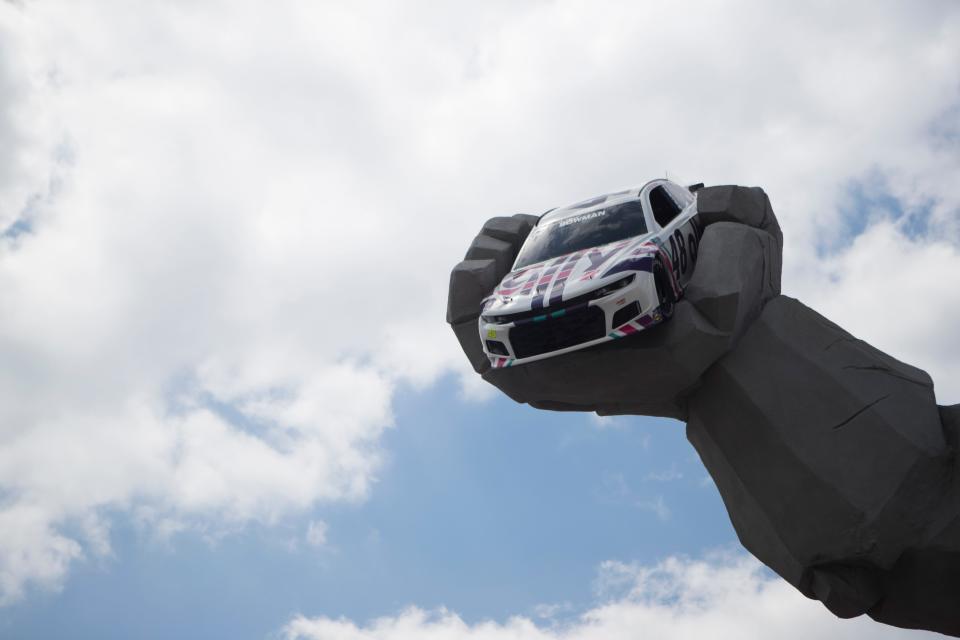
Speedway owns 12 tracks on the NASCAR circuit, and NASCAR owns 14. The other 13 tracks are owned by nine different companies.
There's nothing stopping Speedway Motorsports from moving a race from one of its tracks to another, as long as it has NASCAR's approval. Before the sale last November, Dover did just that, moving one of its races to another track that it owns in Nashville.
The reason was simple, Tatoian said.
"From an objective perspective, you’ve got the hottest market in the country in Nashville," Tatoian said. "We have a facility that we built there that was sitting dormant for 10 years. If you take out the emotion, from a sports perspective, it made sense to get back into the Nashville market.
"The sport has to look at it like we have a finite amount of races, and where are the best places for those races for us to grow and maintain this momentum?"
That has been a goal of NASCAR's ever since 2021, when the five-year agreement to keep the schedule mostly intact ended. The scheduling went back to a year-by-year basis.
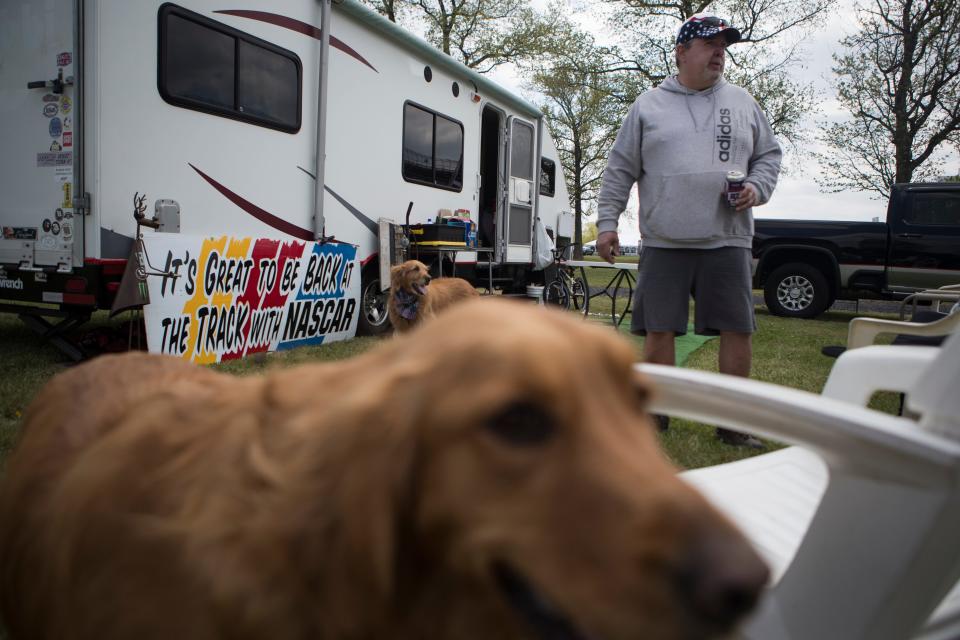
During those five years, which included the first year of the pandemic, attendance and TV ratings plummeted.
NASCAR tried shaking things up. This year, for the first time, a pre-Daytona 500 race was held in a football stadium, the Los Angeles Memorial Coliseum, the site of the first-ever Super Bowl and two Summer Olympics.
NASCAR has also had a race on a combination oval and road course, called a "Roval" at Charlotte Motor Speedway.
And for the second straight season, Bristol Motor Speedway converted its 1/2-mile track into a dirt track. The most recent race was held two weeks ago.
Sure, not everyone liked the dirt track. Longtime driver Kevin Harvick was incensed when NASCAR had to call for a caution flag early in the race so drivers could have the mud cleaned off their windshields.
"We all look like a bunch of bozos coming in to pit because we don’t know how to prep the track," Harvick told reporters after the race.
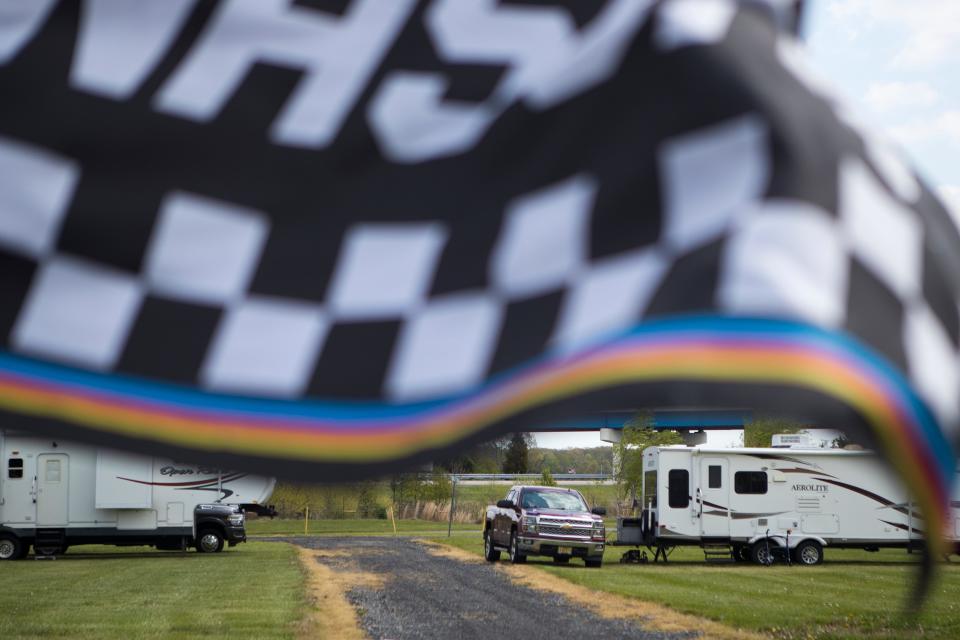
Cup series driver Aric Almirola wasn't a big fan, either, saying: "Dirt racing is cool, but dirt racing is cool with dirt cars. And I just don’t feel like our cars are meant for dirt racing."
But NASCAR loved it. The race was held at night on Easter, the first time it raced on the holiday in about 30 years. And more than 4 million viewers tuned in, making it the most-watched NASCAR event of any kind at Bristol since spring 2016.
"(NASCAR president) Steve Phelps has done a great job pushing all of us to think outside the box, and pushing the boundaries of what we can accomplish," Tatoian said. "Nothing speaks louder than what Bristol has done with dirt, what we did at the Coliseum, racing in Nashville, developing the 'Roval.'
"I don’t know what’s next, but it’ll be interesting."
The question is, will Dover will be a part of that?
Speedway Motorsports could easily move Dover's race if it wanted to give Nashville a second race, or bring one back to Kentucky, which is located less than an hour from Cincinnati and Louisville.
If Dover loses its only remaining race, that would leave Pocono, which already lost one of its two races this year, as the lone speedway in the Philadelphia/mid-Atlantic region.
If it were up to the drivers, they would stay at Dover.
That's because Dover and Bristol's second race are the only concrete tracks on the circuit. Almirola called Dover "one of my favorite race tracks."
"Just the high banks of concrete, and the sensation of speed that you have at Dover, it’s unlike any other track we go to," he said. "You feel like you’re kind of on a roller coaster. The sensation of speed is just really high.
"They call it the Monster Mile. And it will jump up and bite you if you’re not careful."
A critical year
Yet there are reasons for optimism, both throughout NASCAR, and at Dover. This year, NASCAR has seen increased TV ratings, a major indicator of the health of the sport.
Fox Sports said its Cup series TV ratings are up 17% over the first eight races compared to 2021. NASCAR does not release attendance at its tracks, but many have noticed more fans compared to the years leading into the pandemic.
Easter Sunday Dirt Race from @BMSupdates scores double-digit increases from 2021, peaks at 4,518,000 million viewers on @FOXTV
Top 5 available markets:
Greensboro 5.0/13
Charlotte 3.6/9
Hartford 3.5/9
Jacksonville 3.3/8
Norfolk 3.2/8 pic.twitter.com/rleIVIhkPA— FOX Sports PR (@FOXSportsPR) April 19, 2022
That makes this weekend's races all the more crucial for Dover.
This weekend will represent the first time Dover officials can see if the "right-sizing" is actually right. In the past, large banners would be placed over entire sections of unsold seats, even as the grandstands were reduced to from 135,000 to 117,000, then to 83,000.
The most recent reduction, to 54,000, was completed after the September 2019 race – before the pandemic.
It would look much worse to see banners covering sections of seating now that the capacity is much lower.
"This is the first year where everyone has the pedal to the metal in getting fans back," Tatoian said. "This will be important for us."
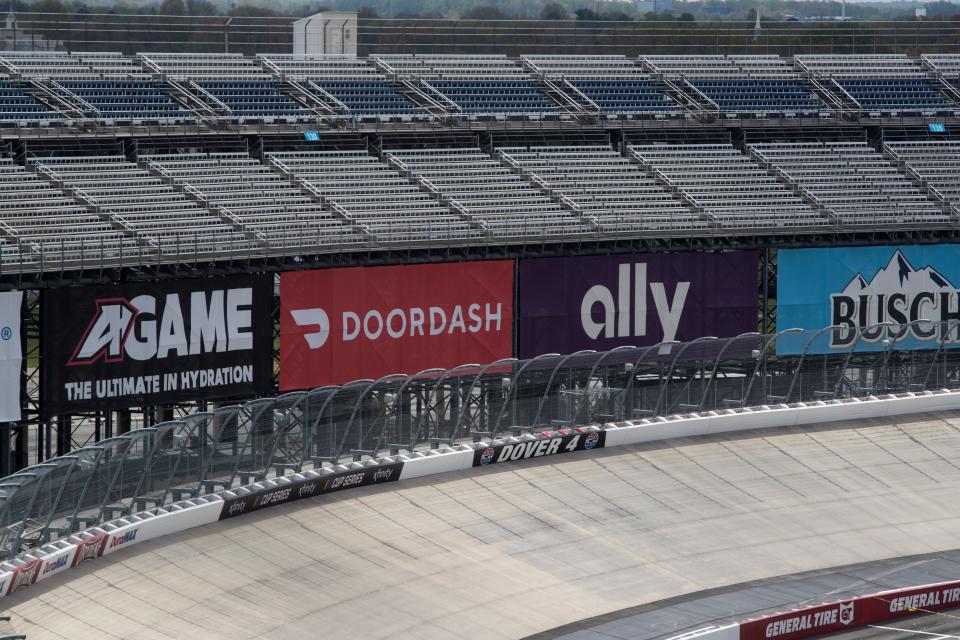
That's also the case for the Dover area, said Kent County Tourism Corporation President Pete Bradley.
“Obviously two major NASCAR races each year had a very positive economic impact,” he said. “You see it anecdotally. The hotels are fully booked, the restaurants are full. You can see the impact of thousands of visitors to our region.”
“I’m optimistic,” Bradley added. “I’ve been talking to Dover folks who think attendance will be stronger at one race than the average of each of the two races. Now if you want to attend a NASCAR race in Dover, you have to go to that race.”
In many ways, the NASCAR races drove the Dover economic engine for more than 50 years.
“A lot of businesses have sprung up, including the Dover Mall, restaurants and hotels,” said Dover Mayor Robin Christiansen, who attended the first NASCAR in 1969. "It’s been an integral part of the community, with both local fans and the fans who visit.”
Christiansen said a city study from about five years ago estimated the economic impact of a NASCAR race weekend in Delaware at $75 million.
That was before the pandemic. No fans were allowed in 2020 and only about 20,000 in 2021. Dover officials said all available tickets were sold last year.
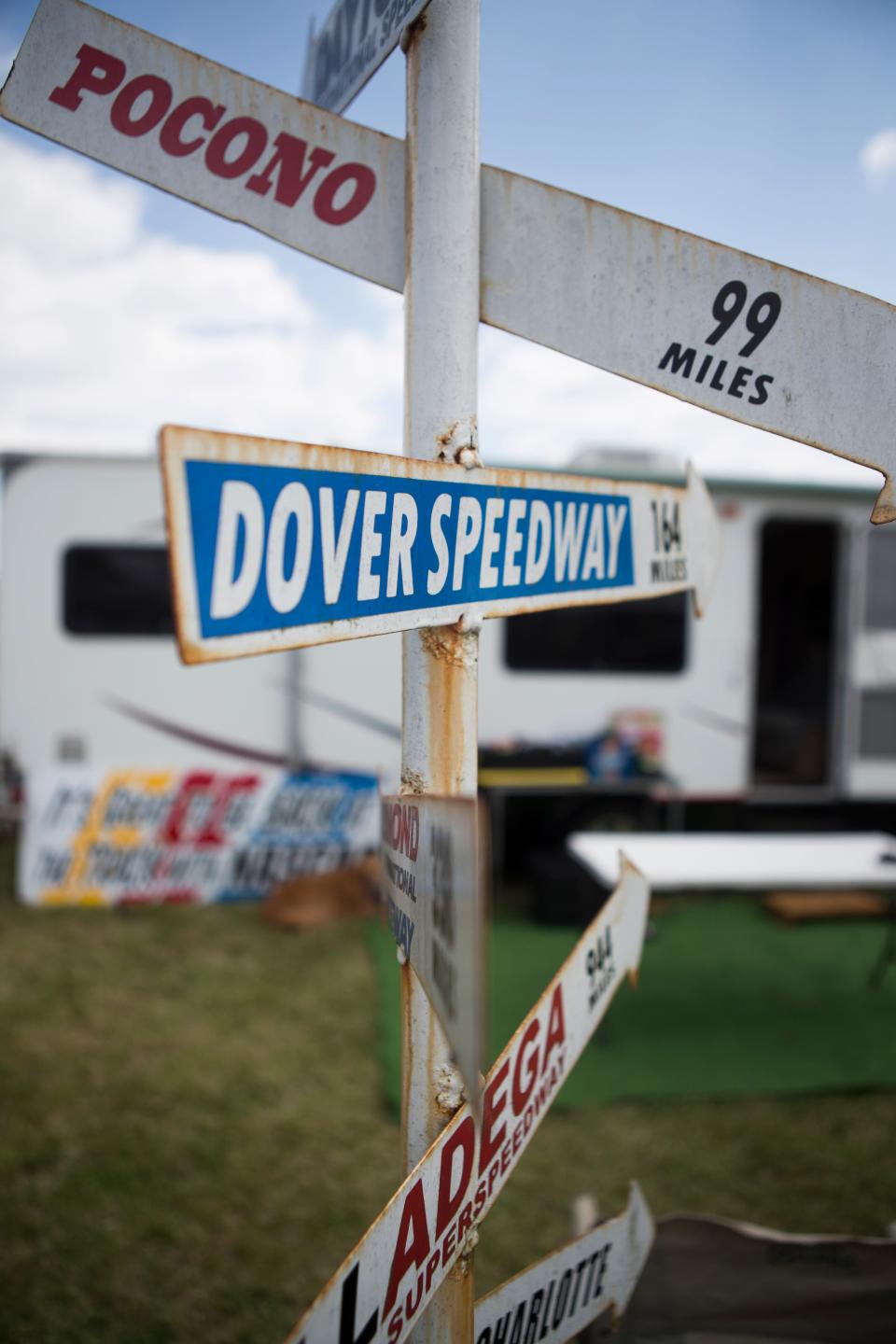
Cliff Weber, general manager of Dover’s Hilton Garden Inn, said bookings haven't bounced back to pre-pandemic levels.
Previously, during two race weeks, NASCAR teams booked all the hotel’s rooms for two nights and about half the rooms a third night. This year, teams have reserved all the hotel’s rooms one night and about half the rooms a second night – and there's just one race.
“Obviously losing that second race is a huge economic impact to our community, not just the hotels but the restaurants and other businesses as well,” Weber said.
Other events have helped fill the void of a lost race weekend and declining attendance. Firefly Music Festival attracted as many as 90,000 fans in 2015 when Paul McCartney was one of the headliners.
In 2021, Firefly was moved from late June to September, in effect making up for the second Dover race, typically held in late September.
There's also the Thunder Over Dover air show at Dover Air Force Base, along with the youth sports tournaments at the DE Turf complex south of the city, near Frederica.
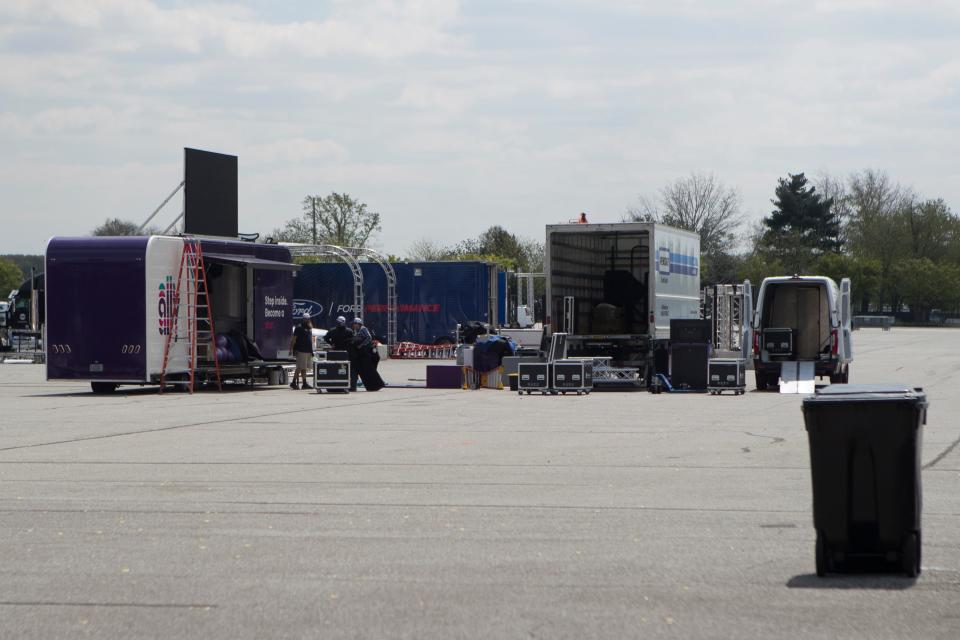
Warning signs brewing
It all began in 1967, when David P. Buckson, then Delaware’s attorney general, purchased the Draper-Gruwell, Raughley and Murray farms, and other surrounding land amounting to about 600 acres.
Two years later, Melvin Joseph's construction company in Sussex County built the speedway.
So much has changed since that first race on July 6, 1969, when Richard Petty won the Mason-Dixon 300 in front of about 22,000 fans. At the time, it was believed to be the largest crowd to attend a sporting event in Delaware.
Petty, one of the best drivers in NASCAR history, raved about the track as fans not only filled the grandstand, they lined up along the fencing.
“It seemed like a half-mile track instead of a mile," Petty said that day. "I was running so fast I didn’t really notice the difference.”
Soon after, both NASCAR and Dover grew rapidly. A second race was added in 1971, and new sections of grandstands were added over the years.
All of the top drivers came to Delaware each year, from Petty, Dale Earnhardt Sr., Jeff Gordon, Earnhardt Jr., Tony Stewart, and of course, Jimmie Johnson, who obliterated the track record with 11 victories. No one else has more than seven.
Gordon was always a local favorite. He was sponsored for many years by DuPont, and Gordon often made pre-race trips to Wilmington to meet with employees and fans, and to sign autographs.
"It's a fun, challenging racetrack," Gordon said before his final Dover race in 2015. "The fans have been amazing. All the support from DuPont over the years being up there in Wilmington has been fantastic. So it has always given me great memories."
In 1994, Joseph's company changed the surface of the track from asphalt to concrete, making it only the second concrete track on the NASCAR circuit.
Soon after, "The Monster Mile" nickname was born. In fact, you can find Joseph's initials inscribed in the concrete just underneath the starter's box. It reads, "MLJ1994."
That truly began NASCAR's golden era in Dover. Gordon began his dominating career in the mid-1990s, and Dover's seating capacity grew every year from 1986 through 2000.
But as the capacity kept building, there were warning signs even in the early 2000s, both for Dover and NASCAR as a whole.
Darrell Waltrip noted this as far back as 2000, his final season of racing.
“What I worry about this sport over the next five years is what’s going to happen when I’m gone, Earnhardt (Sr.) is gone, Rusty (Wallace) is gone, Bill (Elliott) is gone," he said then. "You have to look at the age factor. Yeah, we have a lot of young guys, but we have a lot of old guys, too.
"What’s going to happen to the sport when some young guy no one cares anything about wins a race every week? You gotta have some heroes. If you don’t have heroes, you don’t have interest.”
Less than a year later, Earnhardt Sr. died at the Daytona 500.
The sport continued to grow, though, because of the rivalry between Earnhardt's son, Dale Jr., and Gordon. Soon after, Johnson took over and dominated.
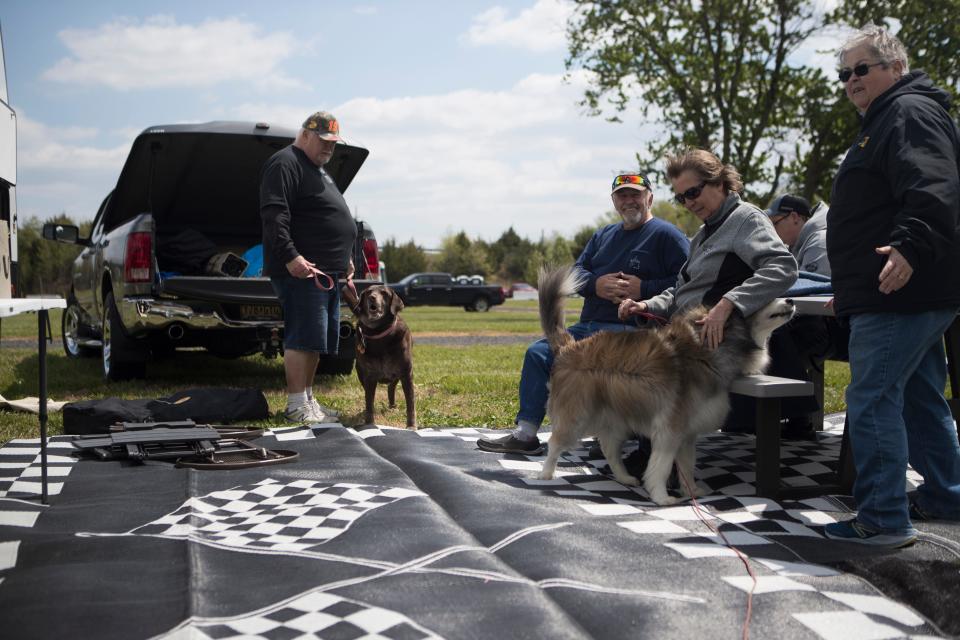
Fans change
The rivalry between Gordon and Earnhardt was still going strong when Tatoian became executive vice president at Dover in 2007.
Tatoian said longtime Dover CEO Denis McGlynn hired him back then because of his background in minor league baseball, minor league hockey and the Arena Football League.
That background is coming in handy now.
"In minor league sports, the Wilmington Blue Rocks, they control everything but the product on the field. They don’t pick the players. They don’t hire the manager.
"In many respects, that’s how NASCAR works. We don't pick the drivers who come here. It's about the fans' experience. So it was less important to Denis at the time whether I knew – literally and figuratively – the mechanics of the sport, as opposed to all the underpinnings to run sales and promotions, food and beverage, sales and safety."
But when the track was filled with more than 100,000 for each of the two yearly races, Tatoian and others didn't have to worry about crowd entertainment gimmicks like dizzy-bat races, fireworks, or food offerings.
"As that audience started to change, I think the fans became a little choosier with what they were doing with their time and families, and we had to react to that," Tatoian said. "I think all sports have had to react to that."
That became apparent after the recession in 2007-08, not just for Dover, but for NASCAR as a whole.

Tatoian describes NASCAR fans as "migratory," meaning they travel from track to track throughout a particular region. They'd arrive mid-week, set up on the track's camping grounds and stay through the race weekend. Then they'd go to the next track, making a multi-week vacation out of it.
The vast majority of fans always came from out of state. So the recession had a bigger impact on NASCAR than in the other sports. The Philadelphia professional teams, for example, always play half of their seasons at home, where fans didn't have to spend hundreds of dollars in travel, including accommodations.
At the same time, the TV ratings started to decline as fans devoted their attention to other sports while the top drivers in NASCAR, such as Gordon, Stewart, Earnhardt Jr., Johnson and so on, started retiring.
The younger drivers don't have the same name recognition yet, even though Tatoian and others have said the depth among the young drivers has never been better.
That is certainly true this year. Of the 10 drivers leading the points race, seven are 32 or younger. The only exceptions are well-known drivers Kyle Busch (fourth) and Martin Truex Jr (eighth) and Almirola (10th).
"I remember way back when, you’d show up to a race track, there’d only be a handful of cars that could win," said Almirola, who's 38 and in his 10th season as a full-time Cup driver.
"Now we show up to a racetrack, and there are probably 20, 25 cars that can win. The field is pretty stout."
In fact, eight different drivers have won a race through the first 10 races this season. Ross Chastain, who won last Sunday at Talladega, and William Byron are the only repeat winners.
Yet fans like a constant winner or a villain, and none of these young drivers have filled that void.
Todd Gilliland, for example, is 22, and in his first season in the Cup series after spending the previous few years on in the Camping World Trucks series. He has certainly seen NASCAR's heyday as the son of driver David Gilliland, who raced in the Cup series from 2006-16.
His grandfather is Butch Gilliland, who raced in the Cup series from 1990-98.
"That’s certainly the goal," Gilliland said about being a part of the next generation of great drivers. "Me and Harrison Burton have been joking about it. All the TV ratings have been up this year, and we’ve been like, ‘Man, we’re turning it around.’
"Hopefully we can take over and be the young faces of the sport soon."
But it isn't easy.
Making a festival atmosphere
If the drivers themselves aren't drawing fans, then the individual tracks and NASCAR have to make it worth their while to come to the races.
This has been Tatoian's focus since he succeeded McGlynn as president and CEO in 2015. Tatoian said it has to go beyond the 3 to 4 hours of actual racing.
So over the years, the speedway has added pre-race concerts. The track has increased and diversified the food offerings. And this year, it is bringing in a petting zoo.
"We want to capture the young fan," Tatoian said. "The best way to do that is to get them with their parents or grandparents, or aunts and uncles. If you don’t keep up, there are way too many opportunities to do other things.
"We’re trying to build more of a festival than just coming to a race. The race is the focal point, and it always will be. But we’re not leading with it. We’re leading with the fun part of coming to our event."
Will it work?
For Dover's future, it might have to.
Contact Martin Frank at mfrank@delawareonline.com. Follow on Twitter @Mfranknfl.
This article originally appeared on Delaware News Journal: Are NASCAR's days in Dover soon coming to an end?

